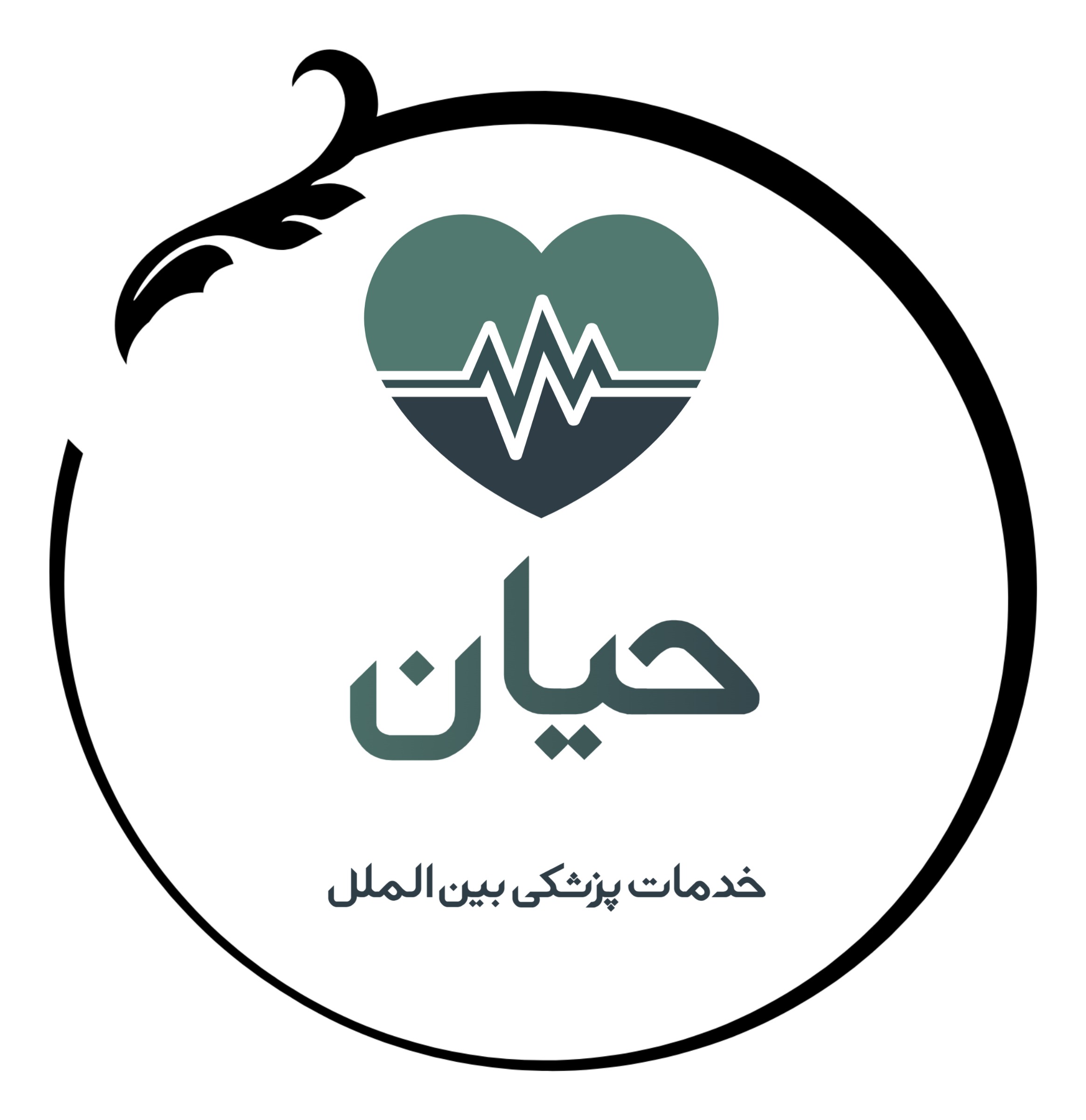Iran has gained global reputation as a leading destination for Rhinoplasty, combining world-class care with attractive costs. This comprehensive guide walks you through everything international patients need to know about rhinoplasty in Iran – from procedure types and costs to recovery and how Hayyan’s medical tourism services can simplify your journey. We begin with an overview of rhinoplasty, why Iran stands out, and how to plan your trip. Whether you are correcting breathing issues or seeking aesthetic refinement, this guide helps you make informed decisions

Introduction
Rhinoplasty (nose job) is a surgical procedure to reshape or correct the nose for cosmetic and/or functional reasons. It can refine the bridge, tip, nostrils or septum to improve facial balance and breathing. Iran has long been known as a “nose job capital,” with one of the highest rates of rhinoplasty per capita in the world.
Today Iran is also a medical tourism hub – attracting thousands of international patients each year for high-quality, affordable nose surgeries. For example, Iran’s Health Ministry reports over 1.2 million medical tourists from 164 countries in one year, many of whom come for cosmetic surgery like rhinoplasty.
Hayyan, a leading Iran-based medical tourism agency, offers comprehensive rhinoplasty packages (visa assistance, hotel booking, interpreters, and more) to simplify your trip. In the sections that follow, we’ll explain rhinoplasty options, costs, preparation and recovery – and how Hayyan can coordinate everything from treatment to travel.
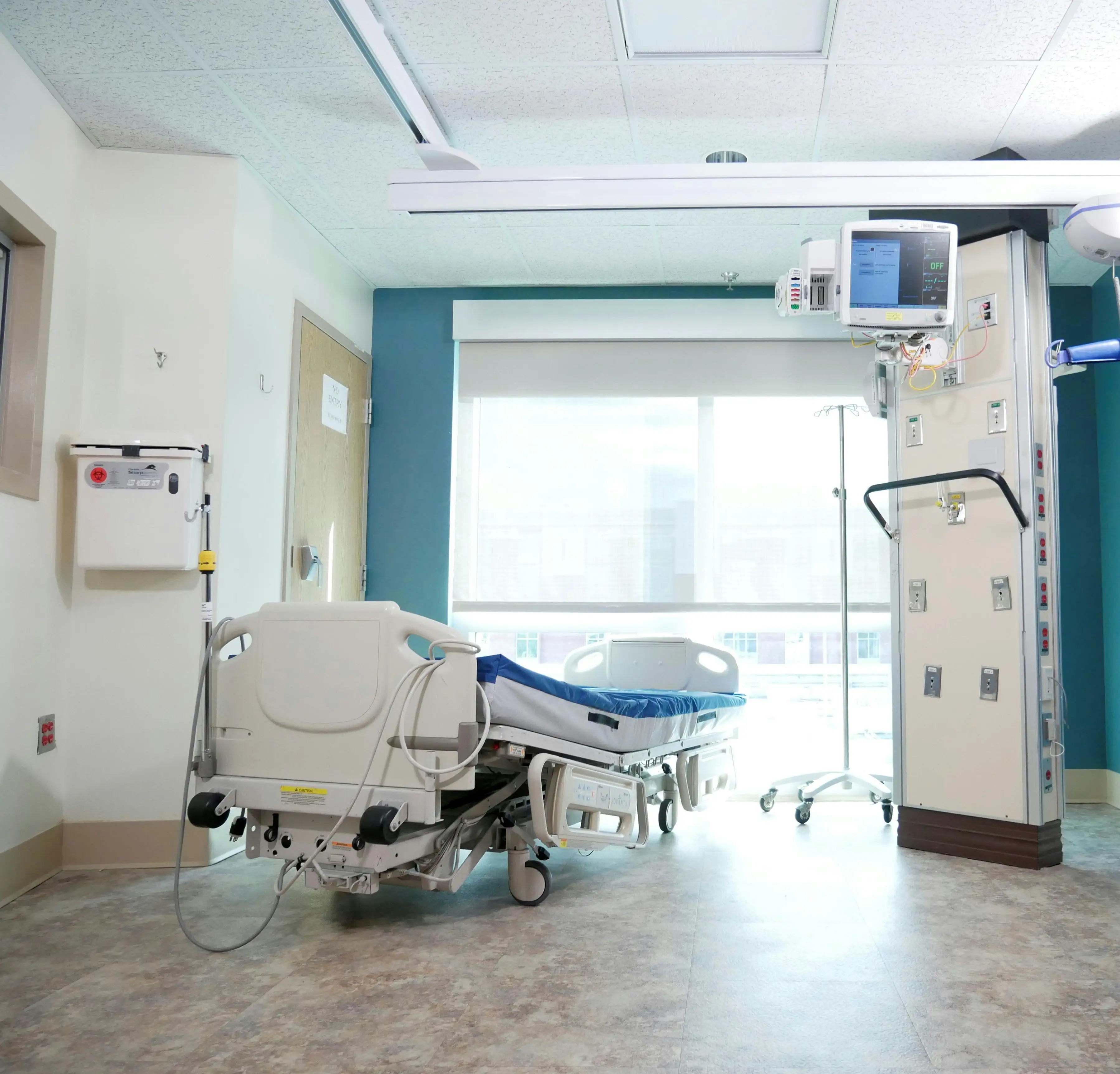
Types of Rhinoplasty
Rhinoplasty can be customized in many ways. Major categories include open vs closed rhinoplasty, primary vs revision rhinoplasty, and ethnic rhinoplasty to suit different nose shapes. Open rhinoplasty involves a tiny incision across the columella (the skin between nostrils), giving the surgeon full visibility of the nose’s framework. This allows precise reshaping but leaves a barely visible scar. In closed rhinoplasty, all incisions are made inside the nostrils. This causes less swelling, but limits surgical view. Surgeons choose the approach based on the complexity of the changes needed.
Other specialized types include tip plasty (focusing only on shaping the nasal tip) and septorhinoplasty (correcting a deviated septum for better breathing). Revision rhinoplasty is a secondary surgery to fix or improve a previous nose job. Non-surgical rhinoplasty using fillers can address minor bumps without surgery.
Ethnic rhinoplasty techniques respect each patient’s heritage – for example, modifying an Arabian or Asian nose while preserving its natural character. Hayyan works with surgeons experienced in all these types. During your consultation, the surgeon will determine which rhinoplasty type best matches your anatomy and goals.
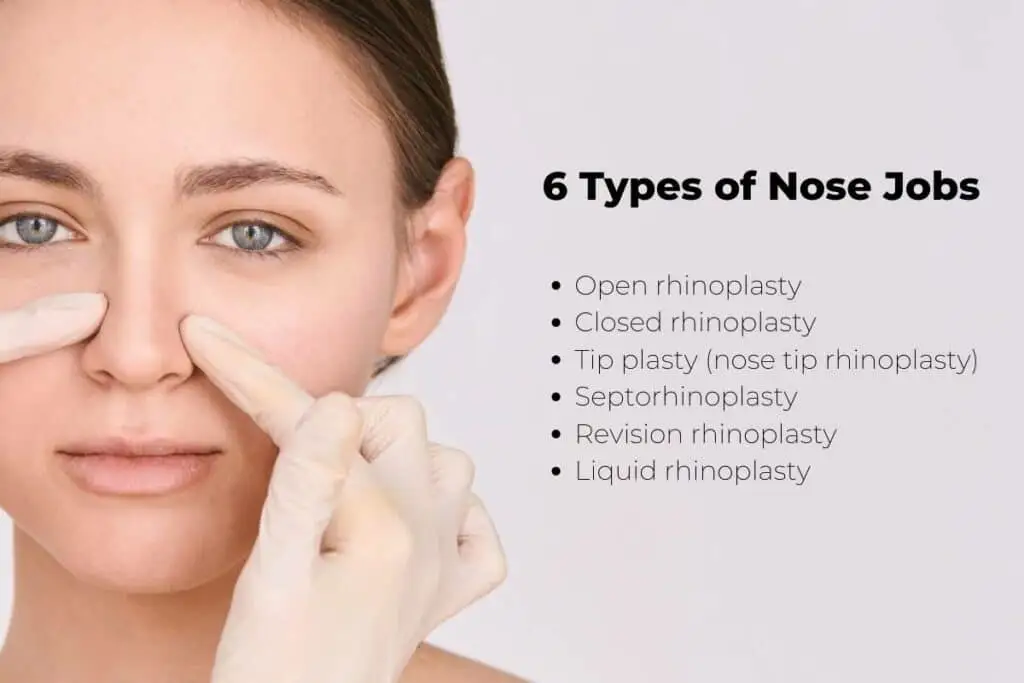
Why Iran?
Iran has emerged as a top medical tourism destination, especially for cosmetic procedures like rhinoplasty. Several factors make Iran attractive for international patients:
- Expertise and Experience: Iran boasts highly trained rhinoplasty surgeons who often perform hundreds of nose surgeries per year. Many work in accredited hospitals (247 centers with medical-tourism licenses). State-of-the-art facilities meet strict international standards, and surgeons regularly train abroad or in major cities like Tehran and Mashhad. The high volume of surgeries tends to improve outcomes.
- Affordability: Rhinoplasty in Iran can cost a fraction of Western prices. For example, average nose surgery costs are roughly $800–2,500 in Iran, compared to over $5,000–7,000 in the US or UK. The Tehran Times reports patients can save 70–80% on a nose job in Iran.
- Comprehensive Packages: Agencies like Hayyan offer all-inclusive packages covering surgery, accommodation, translators and more. For example, Hayyan’s packages include visa assistance, airport pickup, hotel stays, and dedicated interpreters. They even offer different hotel tiers (economy to luxury) with extras like spa or tours. By bundling services, patients pay one upfront quote with no hidden fees, often saving thousands. Hayyan coordinates every detail so you can focus on recovery.
With weak currency and strong infrastructure, Iran makes affordable medical care accessible without compromising quality. The combination of expert surgeons and lower overhead means patients enjoy high standards – many clinics even hold international accreditations (e.g. TEMOS). Iran’s cultural hospitality and beautiful cities (like Tehran, Shiraz, and Isfahan) also enhance the experience for medical tourists. With Hayyan’s support, international patients find Iran a safe, cost-effective choice for rhinoplasty.

Rhinoplasty Statistics
Globally, rhinoplasty remains one of the most popular cosmetic surgeries. It consistently ranks in the top facial procedures worldwide. For instance, in ISAPS data (2022), rhinoplasty was the second most common procedure for women after eyelid surgery.
In Iran specifically, the prevalence is astonishing: in 2013 Iran had the world’s highest rate of nose surgeries. According to news reports, up to 200,000 Iranians (mostly women) get rhinoplasty each year. Tehran once led the world in rhinoplasty per capita, surpassing even Los Angeles.
Medical tourism has further boosted these numbers. In 2022, about 8.5% of cosmetic surgery patients in Iran were foreigners – roughly 1.2 million people from 164 countries. Many of these sought rhinoplasty, drawn by Iran’s reputation and prices. Plastic surgeons note that rhinoplasty has become mainstream across all ages and social groups in Iran.
In other words, Iran has earned a place in the “global nose job” conversation. These trends underscore why many international patients consider Iran: you’ll be joining a large community of people getting rhinoplasty in Iran each year, which means ample experience and specialization.
Costs
A major advantage of rhinoplasty in Iran is cost savings. Below is a comparative cost table for nose jobs in various countries:
| Country | Average Rhinoplasty Cost (USD) | Notes |
|---|---|---|
| USA | $5,000–7,000 | High surgeon/facility fees |
| UK | £6,000–7,000 ($7,000) | Private costs high |
| Germany | €4,000–5,000 (~$4,500) | High-quality care |
| India | $2,000–3,000 | Growing medical tourism sector |
| Turkey | $2,500–5,000 | Popular destination |
| Iran | $800–2,500 | Skilled surgeons, low overhead |
Table: Estimated rhinoplasty costs around the world (USD). Iran offers the lowest end of pricing. As shown, Iran’s prices are extremely competitive. According to Iran medical tourism reports, a nose job in Iran can start as low as $800, with typical cases around $1,500–$2,000. This is due mainly to lower operational costs and surgeon fees in Iran, not lower quality. By contrast, Turkey (another low-cost destination) charges roughly double for similar procedures. Local agencies report that even with top surgeons and hospitals, you can expect to save 70–80% on rhinoplasty by going to Iran.
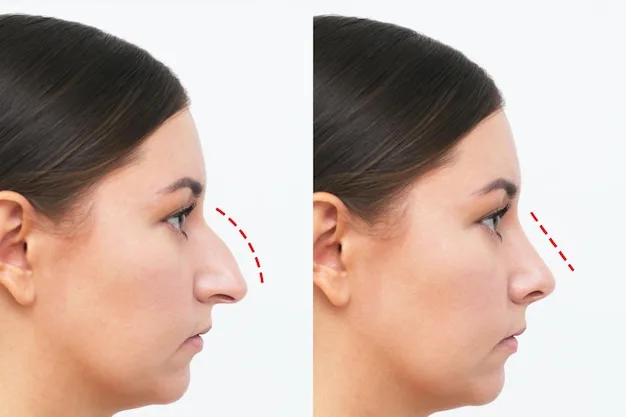
Choosing a Surgeon
With so many surgeons available in Iran, choosing the right one is critical. Key factors to consider are board certification, experience, and aesthetic style. Make sure any surgeon you choose is fully qualified in plastic or facial plastic surgery and certified by the relevant medical board.
Verify that they have performed many rhinoplasties (ask how many per year) and review their before-and-after photos. It’s best if they have specific rhinoplasty expertise, since nose surgery requires skills different from other procedures.
Also assess the surgeon’s results to see if they match your goals. Look at photos of patients with similar nose shapes and desired outcomes; good surgeons will have extensive galleries. Ask about their technique (open vs closed), revision rates, and complication management. Hospitals in Iran often publish surgeon credentials and patient reviews.
Hayyan can help by recommending vetted surgeons with proven track records. They ensure your surgeon uses internationally-accepted standards and speaks English (or provides an interpreter) so you can communicate clearly.
Finally, trust your instincts. A surgeon who listens and understands your goals – and answers questions honestly – is worth more than one offering the lowest price. Avoid deals that seem too cheap, as they may compromise quality. Remember: a good rhinoplasty surgeon in Iran will be competitively priced yet experienced. Hayyan’s coordinators assist you in selecting from highly qualified, board-certified doctors who meet these criteria.

Surgery Process
Undergoing rhinoplasty in Iran typically follows a standard medical protocol. First, you will have pre-surgery consultations (in-person or even via video) to plan your procedure. On surgery day, most nose jobs take about 1–2 hours under general anesthesia (you will be fully asleep). In some minor cases, local anesthesia with sedation may be used, but most international patients receive general anesthesia for comfort.
Iran’s accredited hospitals have modern operating rooms and anesthesia teams to ensure safety. The surgeon will reshape the nasal bones and cartilage according to your plan. Cartilage used for grafting may be harvested from inside the nose, the ear, or even a rib if major augmentation is needed. If a deviated septum (causing breathing problems) is present, it can be corrected during the same operation. After the internal structures are altered, incisions (either inside the nose or the small columellar incision) are closed with fine sutures.
After the operation: You will wake up in a recovery area. Most rhinoplasties in Iran are outpatient, meaning you typically leave the hospital the same day. Hayyan notes that patients usually stay in Iran around 7 days for follow-up care before returning home. Immediately post-surgery, your nose will be protected by internal splints and often a small external splint taped to the nose for support. Expect a drip pad to catch any minor bleeding for a day or two.
Hayyan’s coordinators will guide you through the post-op check-ups. Generally, bandages and splints come off about 5–7 days after surgery. You may feel nasal stuffiness and minor drainage during the first week. With Iran’s top surgeons and attentive nursing staff, pain is usually well-managed with medication. By roughly day 12, most international patients have healed enough to travel home or return to work. Follow your surgeon’s instructions closely – Hayyan will help with translations – and expect your nose to continue refining for several months.
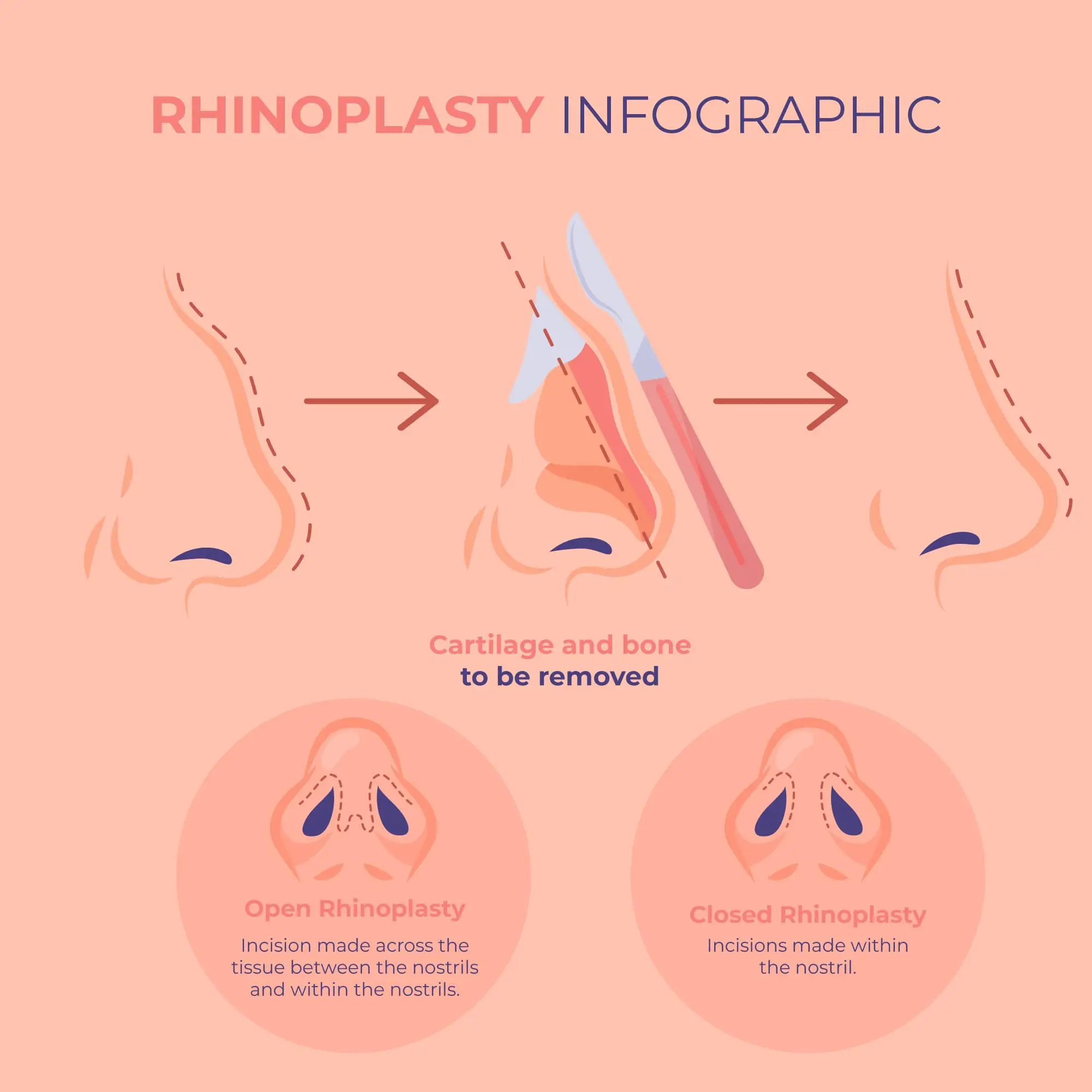
Potential Risks
As with any major surgery, rhinoplasty carries certain risks. These include general surgical risks like bleeding, infection, and anesthesia reactions. Specifically for rhinoplasty, complications can include difficulty breathing through the nose, permanent numbness, uneven or asymmetrical results, prolonged swelling or bruising, scarring, septal perforation (a hole between nostrils), or changes in smell.
In rare cases, additional surgery may be needed to revise the outcome. To minimize risks, ensure your surgeon and facility have high standards.
Iranian hospitals with medical tourism accreditation (like those Hayyan works with) follow strict international protocols. For example, Hayyan only partners with surgeons who perform rhinoplasty in licensed facilities that meet global safety criteria. They also verify that anesthesia and post-op care meet Western standards. It’s natural to worry about “what can go wrong,” but these events are uncommon with skilled surgeons. Still, discuss potential complications in detail before surgery. Read patient reviews and ask for statistics on revision rates. Hayyan can share patient testimonials (anonymized) to give you confidence.
Following your surgeon’s advice on pre- and post-op care will also greatly reduce risk. For example, Mayo Clinic advises avoiding NSAIDs (like aspirin/ibuprofen) for two weeks before and after surgery to reduce bleeding, and to stop smoking or vaping to promote healing. By preparing well and choosing qualified surgeons, you can keep complications to a minimum.
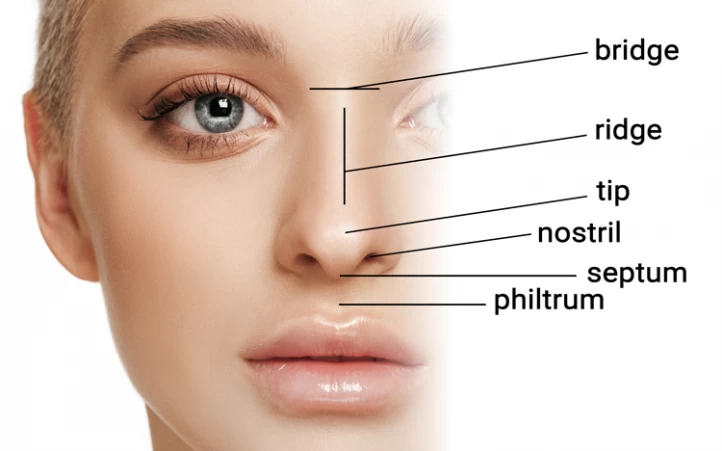
Recovery Chart
The following chart outlines the general recovery timeline after rhinoplasty. Individual healing times vary, but this gives a typical week-by-week progression:
| Post-Op Period | What to Expect |
|---|---|
| Days 1–3 | Major swelling and bruising peak. Head elevated, cold compresses recommended. |
| Days 4–7 | Swelling remains high. Nasal splint/cast and internal packing remain in place. Bruising may spread around eyes. Splint removed ~day 6–7. |
| Week 2 | Bruising and swelling begin to subside. Many patients feel comfortable returning to work by week 2. Gently resume non-strenuous activities. |
| Weeks 3–4 | Noticeably decreased swelling. Nose feels lighter, breathing improves. Most normal daily activities resume (no heavy exercise). |
| Months 2–3 | Moderate residual swelling remains (especially at tip). Shape continues refining. Any mild numbness fades. |
| Months 6–12 | Final shape emerges. All swelling resolves, revealing ultimate result. Most patients see the full benefits by one year. |
This timeline is based on typical outcomes reported by surgeons. In practice, Hayyan patients usually stay in Iran about 7–10 days for immediate recovery care, then continue follow-ups with local doctors at home. Swelling and discomfort peak in the first few days, but diminish week by week. By month three, the majority of changes are visible, and by 6–12 months the nose has “settled” into its final form.
Best Age for Surgery
There is no strict upper age limit for rhinoplasty, but surgeons generally prefer that facial growth is complete. The minimum age is typically around 15 for girls and 16 for boys, when nasal development is finished. However, the “best” age depends on individual readiness. Statistics show rhinoplasty is most popular among people in their 20s (about 31% of surgeries), though many older adults also pursue it with success.
In summary, the ideal time is “when you are ready” – meaning physically mature and emotionally prepared. Teenagers often benefit from early correction (for self-esteem and peer pressure), while older patients (30s–50s+) may seek rhinoplasty as an anti-aging procedure. Hayyan recommends patients (especially teens) have parental consent and realistic expectations. Surgeons will assess growth and health status to determine candidacy. Ultimately, rhinoplasty in Iran has been performed successfully on patients from their mid-teens up into senior age – some in their 70s and beyond – as long as health permits.
Surgery Goals
Every rhinoplasty is tailored to the patient’s goals. Common objectives include refining the nasal bridge (removing a hump), reshaping the tip (lifting or narrowing it), straightening a crooked nose, reducing wide nostrils, or shortening a long nose. Functional goals can include improving breathing by correcting a deviated septum.
Crucially, the aim is to create a natural, harmonious appearance that balances with the rest of the face.rhinoplasty “changes the size, shape or proportions of the nose” to improve appearance or breathing. When planning your surgery, think about why you want the change: Do you want a subtle tweak or a dramatic change? Do you want to look more “harmonized” rather than “operated on”? Discuss these expectations with your surgeon. Iranian plastic surgeons are known for an aesthetic approach that often emphasizes an upturned, refined tip – something many Persian patients request due to cultural ideals.
However, good surgeons will balance patient wishes with ethnic harmony. For example, an “Iranian nose job” often means straightening the bridge and slightly lifting the tip, preserving a natural look. Hayyan will help communicate your goals to the surgeon, perhaps by sharing example photos. Surgeons in Iran respect each patient’s cultural and facial context. They will aim to enhance your unique nose shape rather than apply a one-size-fits-all template. By the end of your procedure, the goal is a nose that looks like it belongs on your face – improved but authentic.
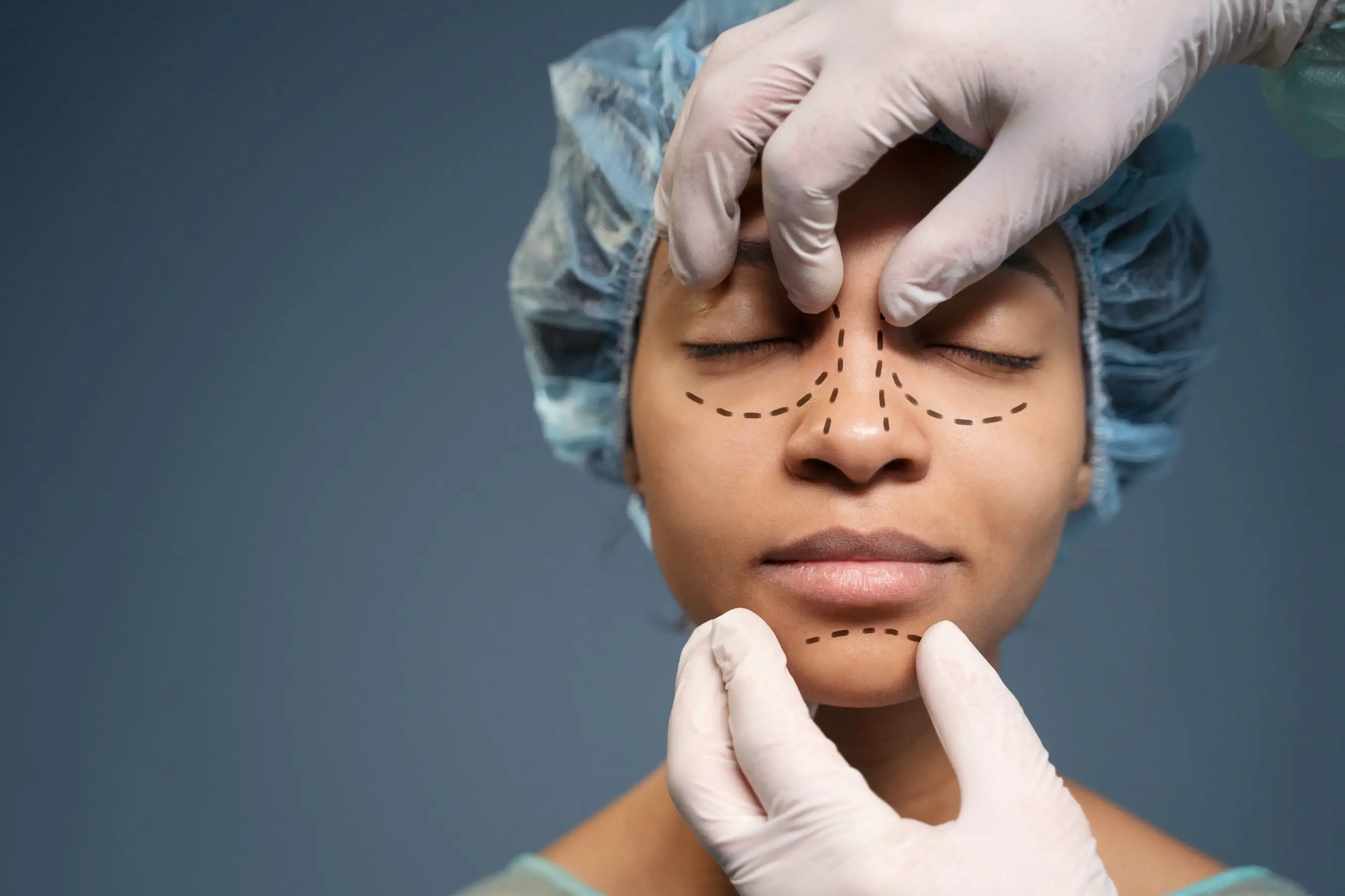
Surgical Techniques
Rhinoplasty techniques fall into open vs. closed (as noted above), but also into preservation ii vs. traditional approaches. In a preservation rhinoplasty, more of the nose’s support structures are kept intact, potentially reducing trauma. Alternatively, surgeons may use cartilage grafts to build up areas (e.g. tip projection). Nasal bone can be cut (osteotomies) for narrowing a broad nose. Each technique is chosen based on nose type and goals.
- Open Rhinoplasty: Allows the surgeon to see all nasal structures by lifting the skin (small external incision). It is preferred for complex reshaping, tip work, or major corrections.
- Closed Rhinoplasty: All incisions are inside; good for less extensive changes with less swelling.
- Cartilage Grafting: If the nose needs height or support, cartilage from the septum, ear, or rib can be grafted in. Many rhinoplasties are accompanied by grafts for tip refinement or to smooth a hump.
- Septoplasty: Often combined with cosmetic rhinoplasty if there is a breathing obstruction. The septum can be straightened without leaving external scars.
Surgeons in Iran use advanced methods common in Western countries. For example, many adopt piezoelectric tools (ultrasound) or computer-assisted planning when needed. Hayyan ensures you have a consultation where the surgeon explains the chosen technique for your nose. You should feel comfortable asking why they prefer open vs. closed, and what materials (grafts, implants) might be used. Ultimately, the chosen technique will be one that safely achieves your goals.
Common Fears
It’s natural to feel anxious. Common fears include pain (though anesthesia and pain meds make the procedure and recovery relatively painless), poor cosmetic outcome, permanent damage, or being far from home. Many patients also worry about language barriers.
Hayyan addresses these by providing interpreters and 24/7 support in English. Fear of looking “unnatural” is often eased by seeing before/after photos of past patients. Fear of complications (bleeding, breathing difficulty, etc.) is valid but rare with proper care. Hayyan’s affiliated clinics provide intensive monitoring immediately after surgery. Following instructions (e.g. not blowing your nose, not wearing glasses for 4–6 weeks) helps avoid issues.
It can help to mentally prepare by understanding the process: swelling and bruising peak in the first few days, then gradually subside. Remember that doctors start each day on your success; Iranian rhinoplasty surgeons are aware of the high stakes and take precautions accordingly. If fear is strong, share it at your consultation. A caring surgeon will explain anesthesia (general or sedation), pain control (you will be monitored and given medication as needed), and step-by-step what to expect after surgery.
You’ll likely find that the reality is far less scary than imagined. Many patients say the worst part was just waiting during healing – and that in hindsight they wonder why they worried! Hayyan will even connect you with former patients who underwent rhinoplasty in Iran, so you can hear firsthand about their experiences and calm any fears.
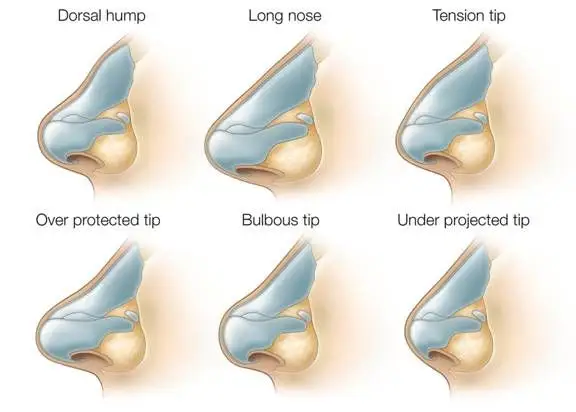
Pre-Surgery Information
Good preparation makes for a smoother rhinoplasty. Before surgery, you’ll meet your surgeon for a thorough evaluation. They will review your medical history, medications, allergies, past nasal injuries or surgeries, and discuss your goals.
A physical exam of your nose and face will determine exactly what changes are needed. It’s important to be honest about any nasal breathing issues or sinus problems. Follow pre-operative instructions carefully.
Typically you will be told to stop blood-thinning meds (aspirin, ibuprofen, certain supplements) at least two weeks before surgery, since they increase bleeding risk.
Quit smoking or vaping several weeks prior, as smoking impairs healing and raises infection risk. Arrange for someone to assist you post-op, and plan to avoid heavy exercise or flying for a short time after. Hayyan will assist with these logistics (visa, accommodation) and provide a checklist. Your pre-surgery lab tests (bloodwork, ECG) and imaging (if needed) can usually be done in Iran a day or two before surgery. Hayyan can coordinate with the hospital in advance.
Also, bring comfortable clothing (button-down shirts to avoid pulling over the head) and any homeopathic sleep aids you like (if approved by the doctor). Be ready to ask questions: for example,it’s good to ask about anesthesia type and what to expect. Finally, set realistic expectations. Show your surgeon example photos if possible. Discuss what “after” looks like for you. Iran’s doctors are skilled at communication – especially with Hayyan’s interpreters – but coming prepared will help your surgeon understand your ideal outcome.
Nose Types
“Nose type” refers to the shape and structure of your nose, which guides surgical planning. For example, a “snub” (upturned) nose has a short bridge and rounded tip, often requiring tip lengthening. A “bumpy” (hump) nose has a pronounced dorsal bump on the bridge.
Other common descriptions include fleshy (thicker skin/tissue), bulbous tip, crooked/asymmetrical, or long vs short nose. Each nose type can be influenced by ethnicity; for instance, Middle Eastern noses may have thicker skin and a dorsal hump, while East Asian noses may have a flatter bridge. In Iran, surgeons see a wide variety of nose shapes. They customize techniques accordingly. For a hump nose, they remove cartilage/bone from the bridge.
For a drooping tip, they may lift and refine the tip cartilages. For wide nostrils, they can perform an alar base reduction. The goal is to preserve your individual features – not erase them. For example, ethnic rhinoplasty aims to enhance the nose without looking “foreign” on you. Hayyan’s surgeons have extensive experience with nose types common in the Middle East and beyond. In your consultation, the surgeon will identify your nose type and explain how they will alter it. Understanding your nose type helps you visualize possible results and ensures the surgical plan is tailored to you.
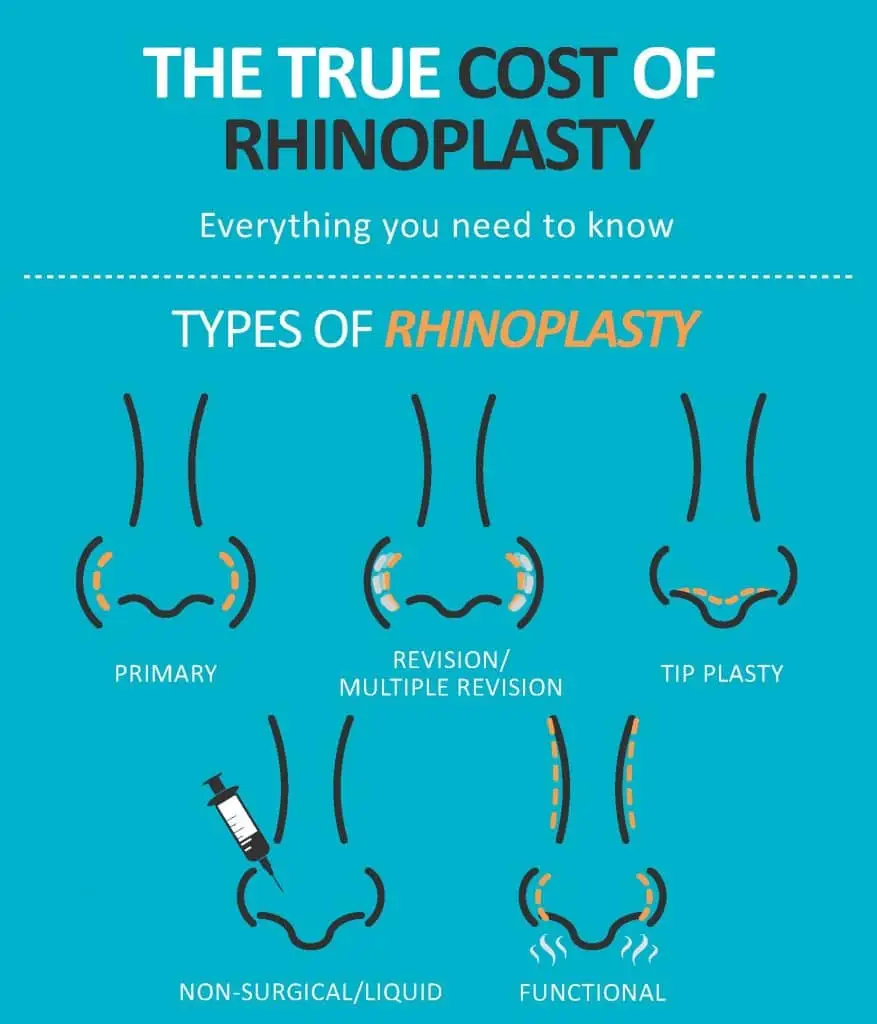
Post-Operative Care
After surgery, proper care speeds healing and ensures the best outcome. Immediately post-op, you’ll have internal nasal dressings (to support the septum) and an external splint taped to the nose. Keep your head elevated as much as possible (use extra pillows) to reduce swelling. Hayyan staff will instruct you on how to change any drip pads under your nostrils (usually a small gauze) if they get soaked.
You can apply cool compresses around (not directly on) your nose to ease swelling. Pain medication and antibiotics are typically prescribed to manage discomfort and prevent infection. For the first week or so, avoid blowing your nose and do gentle saline sprays only if recommended. Strenuous activities (exercise, heavy lifting) should be paused for several weeks.
Hayyan’s guide will remind you to avoid hot showers or saunas initially, and to take baths instead while bandages are on. Also, as one insider tip: do not wear glasses on your nose for at least 4–6 weeks to avoid pressure on the healing bone. If you need vision aid, use contact lenses during this time. On a practical note, Hayyan recommends eating soft foods and staying hydrated the first few days. Gentle walking is fine, but no sports or heavy chores. Keep your follow-up appointments: the surgeon will remove any splints and stitches and monitor your healing.
Iranians are sun-conscious, so wear sunblock and a hat once you’re outdoors (sun can worsen swelling). Nasal congestion is normal for 2–3 weeks; Hayyan advises sleeping on your back and avoiding anything that smells strong (perfumes or spicy foods) that might irritate your healing sinuses.
If any concerning symptoms arise (excessive bleeding, high fever), Hayyan’s team is available 24/7 to coordinate medical care. Otherwise, be patient – final results take time. Within a few weeks you’ll look normal (aside from some minor swelling at the tip), and by 3–6 months the shape will refine dramatically. Many patients enjoy the extra hospital care: clinics in Iran provide attentive nursing, and if you’re uncomfortable returning home immediately, Hayyan can help extend your hotel stay for recovery.
Reserve Now
Considering a nose job abroad? Hayyan makes rhinoplasty in Iran easy and affordable. Their all-inclusive packages cover visa, travel, surgeon selection, and aftercare. Take advantage of top surgeons, state-of-the-art clinics, and great saving on costs. To start planning, get a free consultation or quote through Hayyan’s website, and visit their Costs and Blog pages for details. Your dream nose may be just a click away!
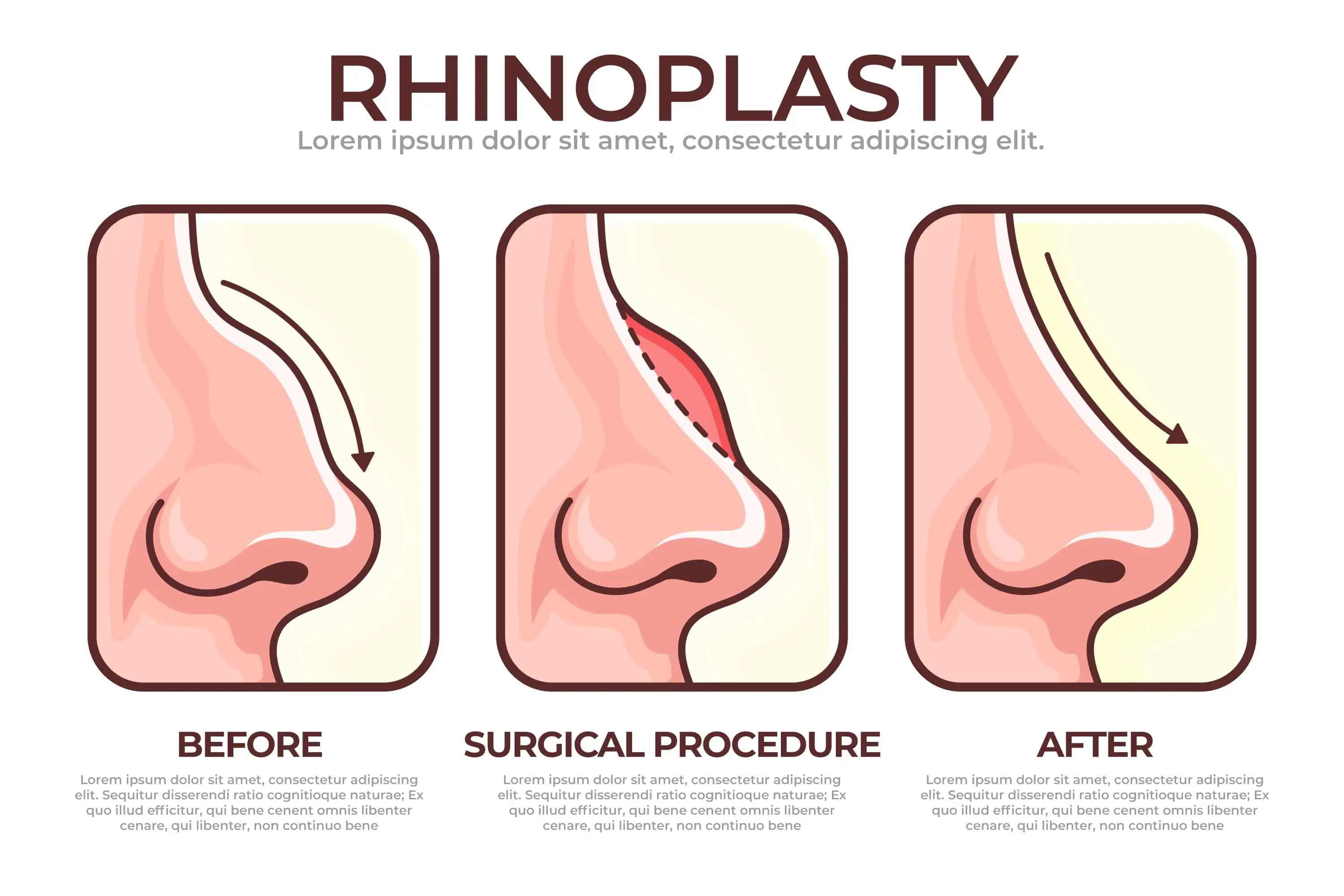
FAQs
Frequently Asked Questions
What exactly is rhinoplasty? Rhinoplasty (nose surgery) reshapes the nose’s structure and appearance. It can reduce bumps, refine the tip, narrow the bridge or nostrils, and improve breathing (e.g. fixing a deviated septum). It is one of the most common cosmetic procedures worldwide.
Why get rhinoplasty in Iran? Iran offers skilled surgeons and modern hospitals at much lower prices. You can save 70–80% compared to Western costs. Experienced medical tourism agencies like Hayyan handle visas, travel, and translators, making it a smooth experience.
How much does rhinoplasty cost in Iran? Depending on the surgeon and case complexity, a nose job in Iran typically ranges $800–$2,500. This includes the surgery fee.
How do I choose a good surgeon? Look for a board-certified plastic or ENT surgeon with extensive rhinoplasty experience. Review their before-and-after photos to ensure their aesthetic style matches your goals. Hayyan assists by recommending only vetted surgeons in accredited hospitals.
What’s the surgery and recovery timeline? Surgery takes about 1–2 hours under anesthesia. You’ll stay in Iran about 7–10 days for immediate recovery and follow-ups. Expect nasal splints/bandages for about 5–7 days. Most bruising/swelling subsides by 2 weeks. You can resume normal activities in 2–3 weeks, but avoid strenuous exercise for 6–8 weeks. The final nose shape settles over 6–12 months.
What are the risks of rhinoplasty? Risks include bleeding, infection, breathing difficulties, numbness, septal perforation, and asymmetry. Permanent complications are rare with experienced surgeons. To minimize risk, follow pre- and post-op instructions carefully (no smoking, avoid certain meds), and choose a reputable clinic.
At what age can I have a rhinoplasty? Surgeons prefer patients whose nasal growth is complete – typically 15–16 years or older. It’s most popular in the 20s, but people in their 30s–50s (or even older) can safely have it too. The “best” age depends on individual maturity and readiness.
Will my insurance cover any part of the surgery? If surgery is purely cosmetic, insurance usually does not cover it. However, if part of the surgery (like septum correction) is for medical reasons (breathing), a portion might be covered in some countries. In Iran, costs are generally out-of-pocket. Hayyan’s packages include everything so you know all expenses in advance.
How can I contact Hayyan to learn more? Visit Hayyan’s website and use their contact form or WhatsApp/chat service. They offer free consultations. You can also check out their pricing page and blog for patient stories and package details.
